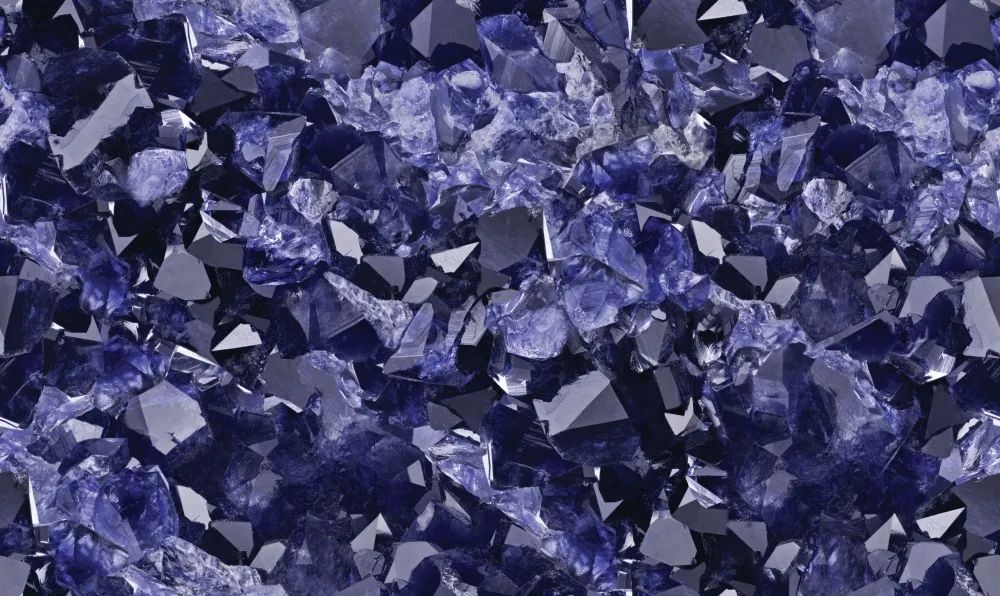
The Origin of Montana’s Treasures
December 2021
by stephanie hobby
Montana’s moniker, the “Treasure State,” dates back to the discovery of gold, when thousands of prospectors flocked to the state in the 1860s. But even when the gold ran out, there were still billions in untold riches buried deep in the ground.
Railroad tracks started to crisscross Montana in the 1880s, which drove another influx of people after copper was discovered in Butte. Hard rock mining soon followed, and a lucky few made fortunes. And while our economy has gradually shifted to more tourism and agriculture bases, the state’s gem industry continues to thrive.
This time of year, we start seeing billboards for one of Montana’s signature treasures - sapphires. Montana is the only state actively producing sapphires; the only other state where sapphires have been found in abundance is North Carolina. So what is it about Montana? And what makes the much sought-after Yogo sapphire so pure?
To understand that, we need to take a closer look at what’s under our feet.
Miles below the Earth's surface, the sweltering heat, and crushing pressure are intense enough to change the very physical properties of rocks. Corundum, a mineral made of aluminum and oxygen, can crystalize under these conditions and becomes one of two popular precious gems: rubies or sapphires. Interestingly, rubies and sapphires are essentially the same, with a slight difference. If chromium seeps in during the crystallization process, the corundum becomes a ruby; all other colors are called sapphires, but blue sapphires get their color from small amounts of titanium making its way into the crystal lattice during formation.
The chemical bonds of aluminum and oxygen are unusually tight, so sapphires are incredibly hard and resistant to scratches. While diamonds are the undisputed champion, rating a 10 on the Moh's scale of hardness, rubies and sapphires come in a very close second at 9. In fact, sapphires, like diamonds, can be used in drills and other industrial purposes and were used for bearing and abrasives during World War II. Because the molecular structure of these crystals is so tightly packed, they are also heavy, which means that most sapphires can be found in creek beds and other bodies of water, left behind as water carries lighter materials away.

#yogolicious
The significant exception is Montana’s crown jewel, the Yogo. Unlike other sapphires formed in metamorphic rock (rock that has changed after a stimulus like heat, pressure, or chemical reactions), sapphires from the Yogo Gulch in Judith Basin County are embedded in igneous rock, which is comprised of different minerals formed when magma cools. As a result, Yogos are extracted through the much more complex and expensive hard rock mining process and tend to be smaller. But as any gemologist will tell you, they are worth it.
First discovered in the late 1800s, Yogos weren’t fully appreciated until they were sent to the famed Tiffany and Company in New York, where jewelers proclaimed them to be the finest gemstone ever found in North America.
Yogo sapphires tend to be flawless, nearly uniform in their signature cornflower blue color. Unlike most other sapphires, they do not require heat treatment to bring out their natural beauty. "It's very, very rare for a sapphire from another location to not require a heat treatment. Something like 95 percent of sapphire corundum we see here in the jewelry trade have had some kind of treatment," said Matt Pittman, a graduate gemologist at Goldsmith Gallery Jewelers.
Geologists who studied Yogo sapphires in the 1980s discovered that they formed over a longer period of time at greater depths and temperatures. "They are, by and large, very clear stones, and we don't see many inclusions, which we used to call flaws,” Pittman said. “It’s very much because of where they are, and the processes that specifically Yogo sapphires go through result in the amazing gemstones that we have.”
Pittman credits unique geologic activity, thanks to our proximity to Yellowstone and the Rocky Mountains, for why Montana has such a wealth of metals and gems, including agates and garnets. “You have to have all the right chemicals here to achieve sapphires, and they have to all be at the right location at the right time, and for whatever reason, all those ingredients result in America’s finest gemstone being right here in our backyard.”
Montana sapphires, and especially Yogos, are popular for many reasons. “What we hear from our customers is that they like that they’re local, American mined, right here in their backyard,” Pittman said. “This is literally a beautiful little piece of America that you can hold in your hand, so there’s sort of this mystique about them.”
While the Yogo Mine is privately owned, there are many other ways to look for sapphires in Montana. For example, you can look for jewels at Gem Mountain Sapphire Mine in Philipsburg during the summer, about a four-and-a-half-hour drive west of Billings. In the off-season, visitors can stop by the shop or order a bucket of gravel with sapphires for $60.
So whether you find gems on your next hike (lucky!) or prefer to search at a local jewelry store, take a moment to enjoy not only their beauty but their fascinating science and history.
Originally printed in the December 2021 issue of Simply Local Magazine
Never miss an issue, check out SLM's digital editions here!





